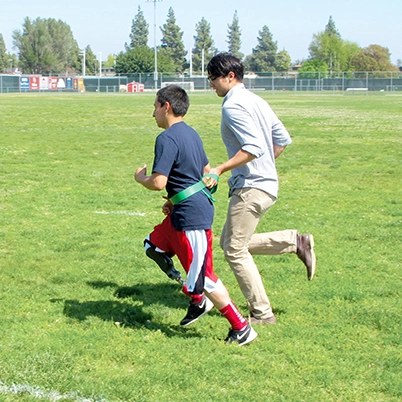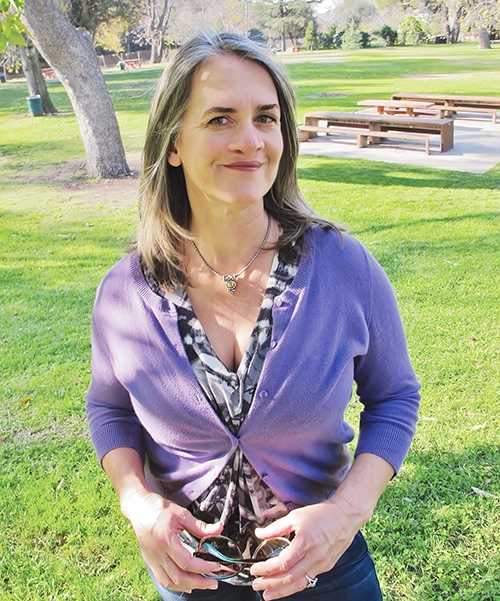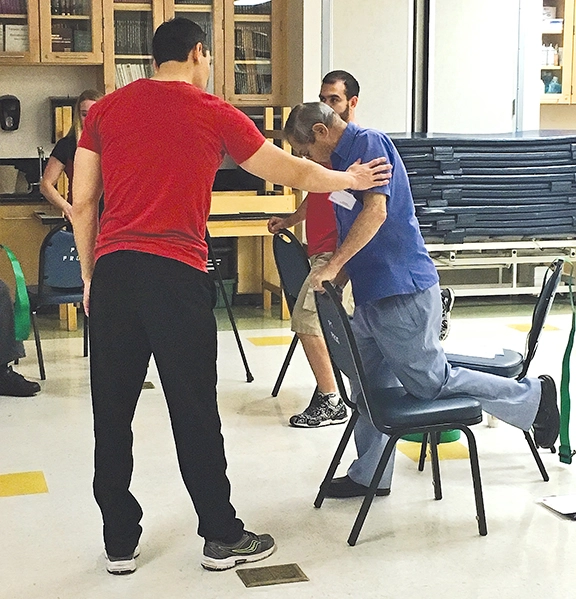By Scott McNutt

While people with lower-limb loss may be able to obtain prostheses, health insurance restrictions, fragmented healthcare services, limited transportation options, and other factors prevent many amputees from receiving sufficient training to make full use of their prostheses.
Free mobility clinics, such as those offered annually during the Exercise Community Living in Prosthetics and Supporting Everyone (ECLIPSE) symposium in Northridge, California, help fill the gaps in mobility training for people with limb loss. Such events provide instruction on a variety of aspects of ambulation, such as hip movement, foot placement, balancing, and walking on different surfaces.
The first ECLIPSE symposium in 2015, presented by California State University, Northridge (CSUN), and organized by Vicky Graham, DPT, OCS, NCS, included sessions on improving walking and balance, a running clinic, and opportunities for community members to have their prostheses checked by specialists. For professionals, it offered training opportunities and exposure to some of the latest technologies.
Mark Van Kampen, a recently retired quality assurance manager from Los Angeles, found the sessions for community members beneficial. Van Kampen, who lost his left leg above the knee in a motorcycle accident six years ago, says he tried new agility exercises and learned new programming for his prosthetic knee.
“But the thing that really made the event for me was the running clinic,” says Van Kampen, noting that he had had limited success with such clinics before.

Image by David Graham.
“This time around, with Vicky and her students, I actually ran,” he says. “I used to do a lot of distance running before the amputation, so it was pretty satisfying to go even just 60 yards.”
Without a prosthesis specifically designed for running, Van Kampen could not fully use what he learned. Yet he was excited by his experience and applied for a grant for a running foot from the Challenged Athletes Foundation (CAF). He also visited Graham and her students later for additional gait training, including videotaped gait analysis and mobility exercises.
Graham, a physical therapy professor at CSUN, started ECLIPSE after recognizing a need for a local event that combined different services for amputees in the community. The idea is not just to train individuals how to function better with their prostheses, but also to reach people with limb loss who may not be mobile at all.
“The running clinic is fun and exciting, but we are also concerned about just getting people out of their homes and getting them peer support, getting them resources to save their lives,” she explains.
To that end, Graham is working with others on a number of projects, such as creating a database of area prosthetists, working to increase the number of peer visitors regionally, and holding frequent pro bono rehabilitation clinics and other events on the CSUN campus. Graham also bolstered ECLIPSE’s 2016 offerings with stretching, strength, and exercise classes. She plans to expand ECLIPSE even more in 2017 in hopes of attracting a broader audience to its programs, including the walking and running clinics, while still aiming to make inroads into the underserved amputee community.
Meanwhile, Van Kampen missed the 2016 ECLIPSE symposium to walk a 5K event with some of his co-workers. He plans to visit Graham and her students soon, though, because he just learned that his CAF grant for a running foot has been approved. He will need pointers in its use, he says, if he wants to run that 5K next year.
For more information, visit www.csun.edu/eclipse/about-eclipse.
MOVING BEYOND MOBILITY CLINICS

Graham says ECLIPSE came about after she volunteered at the Challenged Athletes Foundation races in La Jolla, California, and saw a contrast between the considerable publicity such events garner and the scant attention paid to amputees who are not athletes. She observes that 80 percent of limb loss is caused by complications from diabetes or other vascular conditions, and the affected population often lacks services that can improve their quality of life. So, beyond ECLIPSE, Graham is looking for ways to reach that community. At CSUN, she is working to collaborate with the public and private sectors to increase resources for at-risk populations.
Thus, Graham teamed with companies like Össur Americas and local healthcare providers to put on the ECLIPSE symposium. Also, the pro bono rehab clinics on the CSUN campus have the added benefit of performing needed services for community members while providing practical experience for her students, which may spur more of them to serve the amputee population after graduation.
“Academic institutions are uniquely placed to gather resources, to generate enthusiasm, and to train another generation of healthcare providers,” Graham says. “I envision this model existing all over the country.”
In that regard, she says similar programs are beginning in Fresno, Sacramento, and Bakersfield.
FREE MOBILITY CLINICS IN THE US
There is no national database of mobility clinics, but a partial list of such events follows. Note that many clinics are held only once a year and often with little publicity, so check with local prosthetists or other healthcare providers about clinic possibilities.
Amputee Walking School
www.amputeewalkingschool.com/#!what-we-do/c1rj0
Bremer Prosthetics Step Up! Clinics (Michigan)
www.bremerprosthetics.com/step-up.html
Bright Prosthetics Monthly Amputee Walking & Running Support Clinic (Warrensville Heights, Ohio)
www.brightprosthetics.com
Covenant HealthCare’s Step Up! Amputee Training for Lower Extremity Amputees (Saginaw, Michigan)
http://tinyurl.com/zxhbx3z
ECLIPSE (California State University, Northridge)
www.csun.edu/eclipse/about-eclipse
Orthotic and Prosthetic Activities Foundation First Clinics
www.opafonline.org/calendar
Össur Running & Mobility Clinics
http://tinyurl.com/gvh4npf
Perry Prosthetics Walking Clinic (Perrysburg, Ohio)
www.perryprosthetics.com/walking-clinic



